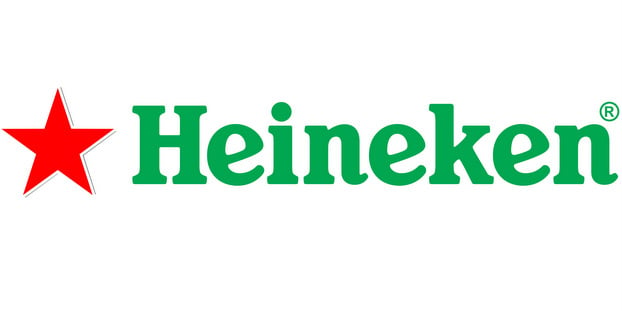
There are breweries seemingly everywhere, and as a result, most of the production and sales growth in the industry is from these newer, smaller breweries, which are outpacing the growth of larger regionals. Another side effect of this growth is decreased activity in mergers and acquisitions (M&A) and investor interest.
Market landscape
The 2018 industry backdrop is one of maturation, professionalization and steady growth at roughly a 5 percent year-over-year clip. While this is slower than overall growth has been in recent years, 5 percent growth is still extremely healthy for a $26 billion industry.
With hundreds of breweries still coming online yearly, a localization trend has become more prevalent throughout the country with most of those entrants tending to be smaller producers. The market is expected to see 7,000 breweries operating by the end of the year. Approximately 85 percent of those breweries are producing less than 2,000 bbls a year, and roughly 90 percent of those are producing less than 4,000 bbls.
In an increasingly competitive market, it’s important for breweries to carefully consider how and where they grow. While many may see higher in-state sales, breweries trying to expand beyond their state lines often experience slow or disappointing sales. That has had a number of industry impacts:
- Different financing options (and terms)
- Challenging distributor relationships
- Increased competition from breweries outside of one’s local market
- Lack of M&A prospects
Effect on M&A deals
With nearly 7,000 breweries, one would think there would be a continuous and substantial M&A market. However, in recent years, there has been a noticeable downturn in M&A activity, a byproduct of several industry trends and events over the past several years.
Prior Consolidation. The most likely buyers, Big Beer and financial sponsors, have already made most of its acquisitions over the past four to five years, with those brands being spread out across all corners of the continental United States.
Self-distribution. The industry faces some challenging headwinds that resulted from growth slowing, increased competition, SKU proliferation and distributor consolidation. With the localization trend gaining steam, self-distribution has also become more prevalent than in years past.
Shrinking footprints. While margins are better, brewery footprints have shrunk, creating challenging upside opportunity for potential acquirers looking to expand a brand’s presence and generate a nice return on its investment.
Tighter distribution. Distributors, consolidation aside, are increasingly reducing the number of brands and SKUs they carry in their portfolios. This creates a difficult growth environment for breweries looking to expand out of their local markets as well as for potential acquirers.
Valuation gap
The most significant issue in lack of M&A deal flow, among many, is the continued valuation gap between buyers and sellers. Fewer deals are getting done largely because brewery owners seem to be holding onto valuation multiples and dollar-per-barrel metrics from several years ago when the industry was growing at 15 to 18 percent annually and there was a rising-tide-floats-all-boats mantra permeating the industry.
The market environment is very different now. As a result, EBITDA multiples in the mid- to high teens (or more) are no longer realistic and likely won’t return. Nevertheless, there will always be liquidity exit opportunities for strong beer brands that are growing, make great beer and have a unique story or message that cultivates customer loyalty and a fan base.
Liquidity event preparations
Breweries that are looking for some kind of liquidity exit or capital event — some kind of sale, employee stock ownership plan or outside equity investment, for example — could greatly increase their prospects by focusing on improving their business first and foremost. Forgetting about the potential liquidity opportunities and cleaning up shop first will pay dividends in more ways than one.
Here are some ways to do that:
- Clean up internal systems and controls
- Create a defensible, detailed and realistic cash flow forecast to better plan and operate the business, then revisit it with actual expenses and depletions every three to six months
- Understand key costs of raw materials, all costs of goods sold and material operational expenses
- Make sure there are well-drafted agreements for key employees, materials, vendors and distributors in place (and read them)
- Look for opportunities to be more efficient, cut costs — but not quality — and expand
- Listen to customers, distributors, employees and vendors about what is and isn’t working as well as what beers are selling, why and where
Address red flags
Finding where and how to look for red flags in one’s business is never easy. It’s beneficial to keep your eyes open with all facets of the business. What worked five or even three years ago may not work today. Being open to change and pivoting certain aspects of the brewery are critical to future, ongoing success.
If red flags are discovered, depending on how severe they are, immediate change may need to occur. That change may be significant, so having the right team in place is paramount. That can range from having the right brewmaster or sales people in place to outside business advisers, such as accountants, legal counsel and consultants.
This internal and external team of advisers can not only help identify the key red flags and risks, but also affect change to reverse negative trends to help your brewery (and brewery owner) achieve its business goals and objectives. In this current market environment, sooner is always better when it comes to developing and implementing a plan.
Derek Groff is director of valuations services for Moss Adams and has been providing business valuation services since 2008 and financial advisory services since 2001. Groff has worked with dozens of craft breweries and distributors on a variety of valuation, consulting and complex litigation matters.





Leave a Reply
You must be logged in to post a comment.